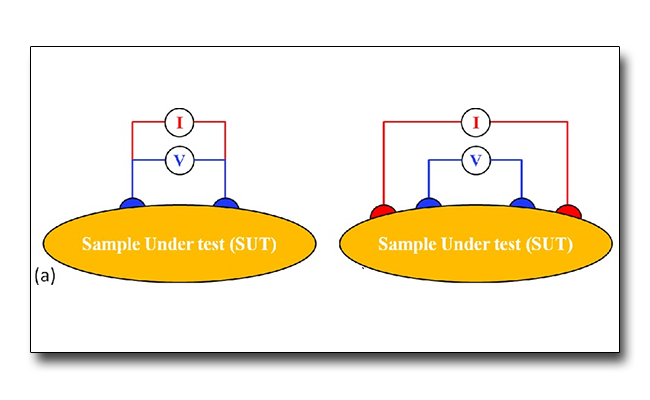The electrical impedance measurement allows investigating the response of a material to changes of electrical current or voltage. The resistance corresponds to the impedance under continuous current/voltage conditions (real part of impedance) and is particularly important since it allows dividing materials into large classes according to their capacity to transport electric current: conductors, semiconductors, and insulators.
Additionally, the analysis of the resistivity as a function of the temperature allows understanding conduction mechanisms, whereas the analysis of impedance as a function of stimulation frequency allows refined transport evaluations in complex materials (impedance spectroscopy). Measurements of layer resistance can be performed by using both four-point collinear probe and van der Pauw techniques, that are usually used for the measurements of semiconductors’ resistivity bypassing the contact resistance and avoiding the fabrication of electrical contacts on materials under test.
4 point in line in T @Vacuum Van der Paw@RT 4 point in line in T @UHV Impedance spectroscopy in T Alessi 645 4 point probe


 English (UK)
English (UK)  Italiano (Italia)
Italiano (Italia)